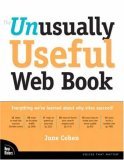This is part 2 of 3 in a series about creating effective Web sites. In part 1, we discussed planning that should take place before you even begin building your site. Today in part 2, we will talk about content.
Your customers will learn a lot about your business from the content of your site. Not only will the content you select be important, but the presentation and organization of that content will leave an impression as well. An organized, well laid-out site with just the right information will make your prospective customer more likely to feel comfortable doing business with you. In contrast, a disorganized site with too little or too much information may send your prospective customer running to a competitor. Content can make or break your credibility.
When it’s time to write your content, it is critical to keep your message clear. You never want to confuse your customers. Keep it simple and make sure to include the information your customer needs to know. Here are some ideas to help make sure your content is clear:
- Use simple words. Avoid fancy words and jargon that may confuse your customers.
- Avoid acronyms. Your customer may be unfamiliar with the acronym and, therefore, may not understand what you are saying. If you do use acronyms, make sure to spell it out at least once on each page. (Why each page? If you only define it on one page, and your user doesn’t read that page, they will miss it.)
- Use short sentences and short paragraphs. Breaking your information up in to small chunks greatly increases the clarity of your message.
- Use bullets and lists. Information in list form is easier to comprehend.
- Write in a conversational, yet professional style. A conversational style helps you keep your language simple and clean.
Tomorrow in part 3, you have a site, now what?








0 comments:
Post a Comment